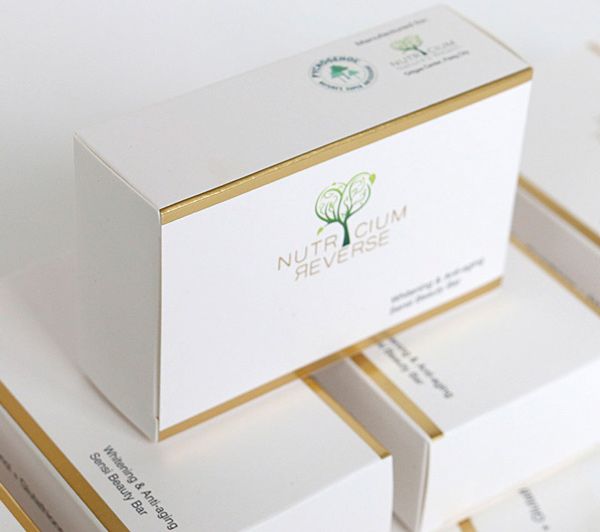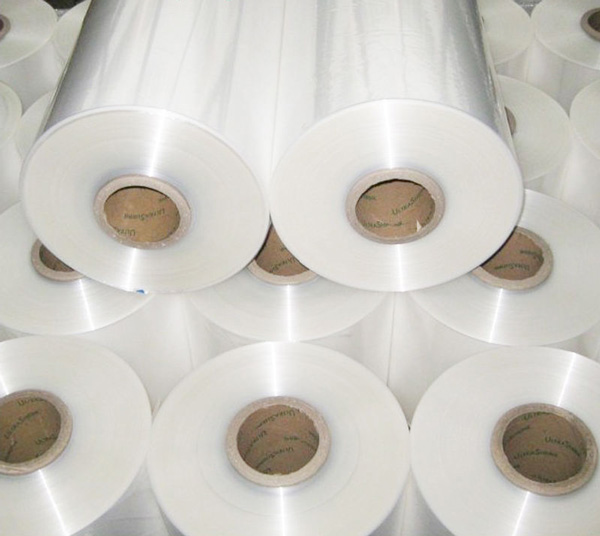PLA Lamination Film: The Eco-Friendly Choice for Packaging
Lamination has been a popular choice for preserving and protecting a wide range of items, from important documents to cherished photographs. One innovative and environmentally friendly option you might consider for your lamination needs is PLA (polylactic acid) lamination film. In this article, we will introduce you to this unique material, its benefits, and how it compares to traditional lamination films.
You may wonder why PLA lamination film stands out from other types of lamination materials. Well, PLA is made from renewable resources, including cornstarch and sugarcane, and is fully biodegradable and compostable. As a result, using PLA film presents an opportunity for you to reduce your carbon footprint and make a positive impact on the environment. Furthermore, this material offers high transparency, exceptional gloss, and excellent printability, making it a great choice for a variety of applications.
Now, let's dive deeper into PLA lamination film and how it fares in terms of performance, processability, and versatility. We will explore key aspects, such as its compatibility with various printing and laminating technologies, it’s bonding strength with other substrates, and the wide range of industries and applications where PLA laminates can be a game-changer. Be prepared to be amazed by the endless possibilities of PLA lamination film!
Understanding PLA Lamination Film
Properties
PLA (Polylactic Acid) lamination film is derived from renewable resources, such as corn starch, making it an eco-friendly alternative to traditional petroleum-based films. As you use PLA, you can appreciate its key properties:
-
Biodegradable: PLA breaks down naturally over time, reducing its environmental impact.
-
Lower Melting Point: PLA films have a lower melting point compared to other materials, allowing for easy and efficient lamination processes.
-
Tensile Strength: PLA films exhibit good tensile strength, ensuring your final product is durable and resistant to wear and tear.
Features
When choosing PLA lamination film for your projects, take note of the following features that set it apart from other lamination materials:
-
Clarity: PLA film has excellent transparency, showcasing the content beneath without any distortion.
-
UV Resistance: It offers protection against fading and discoloration due to UV exposure, ensuring your product looks fresh for a longer period.
-
Printability: PLA film works well with various printing inks, allowing for high-quality prints and custom designs for your projects.
-
Versatility: It's compatible with various substrates, ranging from paper to plastics, so you can find the perfect fit for your specific application needs.
As you explore PLA lamination film, you'll find it's an excellent choice for various applications, including packaging, labels, and promotional materials. Its eco-friendly nature, combined with its many desirable properties and features, makes PLA a popular choice for many businesses looking to reduce their carbon footprint and create a sustainable future.
Manufacturing Process
To begin the manufacturing process of PLA lamination film, you'll first need to gather raw materials. These primarily include polylactic acid (PLA) resin and additives. The PLA resin is derived from plant-based sources like cornstarch, sugarcane, or cassava.
The next step in the process involves melting the PLA resin. You'll need to heat the resin to a certain temperature, usually between 150 and 180 degrees Celsius. At this temperature, the resin transforms from a solid to a molten state, making it easier to mold into the desired shape.
Once the resin is melted, it's time to mix in any additives that you may want to include. Some common additives for PLA lamination films are:
-
Stabilizers: To enhance the film's stability and prevent degradation.
-
Plasticizers: To improve flexibility and elasticity.
-
Colorants: For tinting the film or providing a desired appearance.
After mixing the additives, the molten material is ready for extrusion. You'll need to run the material through an extruder, which is a machine that pushes the molten plastic through a die or an opening to create a continuous film. The extruder can either be a single- or multi-layer machine, depending on the desired characteristics of the finished product.
Here are the common extrusion methods used in PLA lamination film production:
-
Blown Film Extrusion: In this method, the molten material is inflated and stretched, creating a thin, bubble-like film. As the material cools, it solidifies into the desired thickness. This technique is widely used for creating thinner films that require uniform thickness and good barrier properties.
-
Cast Film Extrusion: This technique involves wiping the molten plastic across a flat, chilled surface called a casting roller. As the plastic solidifies, it adheres to the roller and forms a continuous film. Cast film extrusion is often used for thicker and more rigid films.
The final part of the manufacturing process is lamination. This is when the PLA film is applied to a substrate, such as paper, polyester, or aluminum foil. The lamination process can involve either adhesive lamination or extrusion lamination. In adhesive lamination, a layer of adhesive is applied between the film and the substrate, while in extrusion lamination, the film and substrate are pressed together while the film is still molten.
After the lamination process, the finished product is wound onto a roll, trimmed, and prepared for shipment. You now have a high-quality PLA lamination film.
Benefits of PLA Lamination Film
Environmentally Friendly
PLA lamination film is an excellent choice for you if you're looking to go green. Made from renewable sources, such as cornstarch and sugar cane, PLA—or polylactic acid—film significantly lowers your carbon footprint compared to traditional films made from fossil fuels. By using PLA lamination film, you contribute to the reduction of greenhouse gas emissions and support sustainable farming practices.
Biodegradability
One prominent advantage of using PLA lamination film is its biodegradable nature. Unlike conventional plastic films, PLA decomposes into harmless substances in industrial composting facilities within a few months. This means you don't have to worry about the lasting impact of plastic pollution when using PLA lamination films in your products.
Health and Safety
When it comes to health and safety, PLA lamination film offers you peace of mind. This material is ideal for packaging food items, as it is free from toxic chemicals and additives that could harm you or your family. Moreover, PLA doesn't release toxic fumes when incinerated, ensuring cleaner air quality for everyone.

Applications of PLA Lamination Films
Food Packaging
When it comes to food packaging, you'll find that PLA lamination films offer numerous benefits. They provide excellent barrier properties that help keep your products fresh and protected. Additionally, these films are biodegradable and compostable, making them an environmentally friendly option. Some common applications include:
-
Fresh produce packaging
-
Snack packaging
-
Baked goods packaging
Medical Packaging
PLA lamination films are also gaining popularity in the medical packaging industry. They offer a high level of transparency and can be easily sterilized, ensuring that your medical supplies remain safe and hygienic. Key applications of PLA lamination films in this sector include:
-
Disposable medical supplies packaging
-
Pharmaceutical products packaging
-
Medical instrument packaging
Consumer Products
The versatility of PLA lamination films extends to consumer products as well. Due to their eco-friendly nature and strong protective properties, you may find these films useful for a variety of products. Some examples are:
-
Electronics packaging
-
Personal care products packaging
-
Toy packaging

Kraft Box with PLA Film Window
Future Outlook for PLA Lamination Film Market
As you're aware, PLA Lamination Film is becoming increasingly popular due to its eco-friendly features. In the coming years, you can expect growing demand for PLA lamination film as businesses adopt sustainable packaging solutions.
You'll likely see advancements in the market, as manufacturers focus on enhancing the properties and performance of PLA films. This will lead to a greater variety of applications, opening up new possibilities for your business. For instance:
-
Improved temperature and moisture resistance: This makes PLA lamination films suitable for a broader range of food packaging applications.
-
Enhanced strength and durability: Increased use in electronic packaging and other industrial applications.
It's important to stay informed about regulatory and industry trends. As governments worldwide impose stricter regulations on plastic waste, companies using non-biodegradable materials may face penalties. This will further drive the shift toward PLA lamination films.
Keep an eye on emerging markets and regions. Developing countries are expected to contribute substantially to the growth of the PLA Lamination Film market. This presents opportunities for you to expand your business and reach untapped customer bases.
Lastly, explore collaborations with other businesses in the market. This could involve partnerships with PLA resin suppliers or even research and development collaborations. With a shared vision for sustainability, you can work together to create innovative solutions that boost the PLA Lamination Film market.
In summary, to stay competitive in the future market, it's crucial for you to stay informed and adaptive while tapping into new opportunities and growing demand for PLA lamination films.

PLA Film Laminated Color Paper Box
In conclusion, PLA lamination films have significant advantages in terms of sustainability and reducing environmental impact. As someone interested in eco-friendly solutions, you should consider using PLA films for your project of branded paper packaging.
As you move forward with your endeavors, bear in mind PLA films' main benefits and drawbacks. They are a sustainable choice, sourced from renewable resources, and biodegradable. However, they have lower temperature resistance and might not suit all applications.
In the end, your choice should depend on the specific requirements of your project, your commitment to environmental responsibility, and the cost-effectiveness of PLA films for your needs. Remember to always compare different suppliers and products, ensuring you make an informed decision that aligns with your values and objectives.




